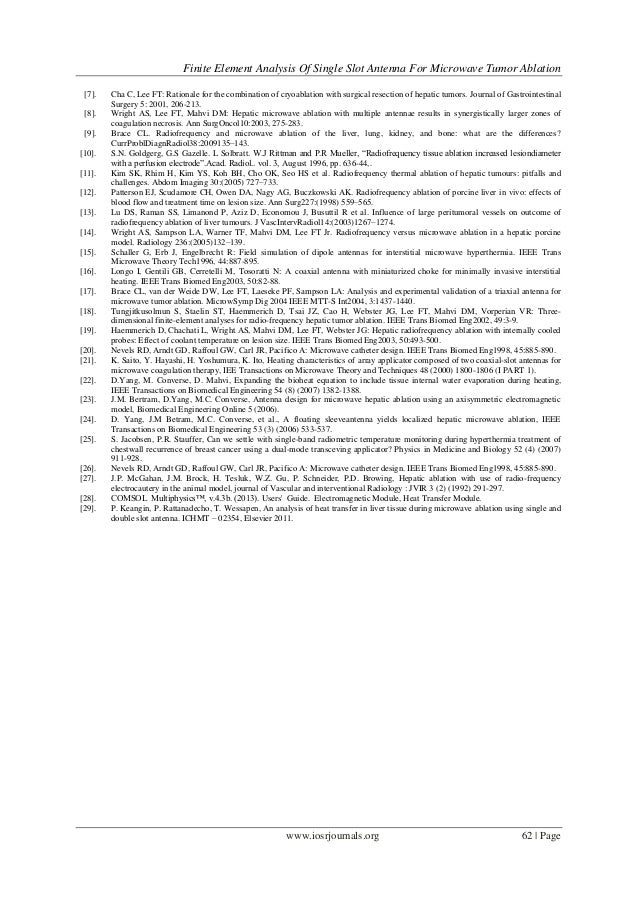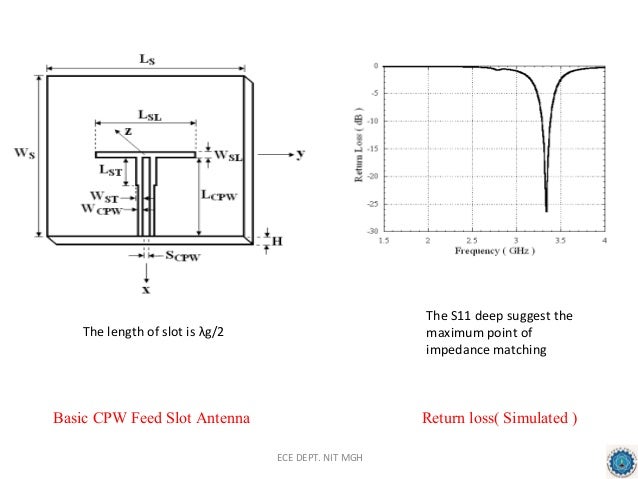Antenna design. Several antenna designs have been shown to be effective for the treatment of deep-seated hepatic tumors. Recently, Saito et al presented a design for a double slot antenna that is capable of achieving a higher degree of SAR localization than a standard single slot antenna and has been used in initial clinical trials. MULTIPLE ANTENNA MICROWAVE ABLATION: IMPACT OF NON-PARALLEL ANTENNA INSERTION. Dual antenna ablation at 2.45 GHz for Dual Slot Antennas: Converging and Diverging Configurations. During microwave ablation, an antenna is inserted under image guidance, and radiates electromagnetic energy into. Improved microwave ablation modelling 3193 to the area of interest. This design, however, has the drawback of making the antennas thicker, thus more invasive (Lin et al 2008,Nevelset al 1998). Hamada et al (2000) investigated a dielectric-loaded coaxial-slot antenna in order to achieve localized heating near the tip of.
0031-9155/58/10/3191
Abstract
Microwave ablation is a technique used in treating hepatocellular carcinoma, especially in cases where surgical removal is impossible. In the present study we are investigating the effects of design characteristics of a coaxial slot antenna (single- versus double-slot, slot-to-tip distance and slot size) on the ablation zone characteristics (dimensions and shape). The specific absorption rate field and the temperature rises are calculated for a variety of application times and powers. A plateau in the ablation zone dimensions in healthy and cirrhotic liver models is predicted, but not in malignant ones. It is found that the value of the perfusion rate (which is different for each clinical case) is of crucial importance in order to correctly estimate the ablation zone. An underestimation of dimensions is expected, if higher perfusion rates are used (i.e., values for healthy tissue rather than malignant). In contrast, an exact determination of the values of relative permittivity and conductivity is less significant for predicting the ablation zone.
Export citation and abstract
General scientific summary Microwave ablation (MWA) is a novel, minimally invasive, thermal-based technique used in treating hepatocellular carcinoma. In this study we present clinically relevant numerical models, aimed to quantify the characteristics (dimensions and shape) of the ablation zones. Such information can aid in patient-specific pre-treatment planning. Coaxial antennas of different designs (single- vs double-slot, various slot-to-tip distances and slot sizes) were modelled and their performance was compared. Double-slot antennas in the range of about 10 mm were found efficient. Regarding modelling the tissue, we showed that the value of perfusion rate (which is different for each clinical case) determines the behaviour of the ablation zone. Its correct evaluation is of crucial importance to estimate the extent of heating. As a step to close the gap between experimental and theoretical studies, we showed that an underestimation of dimensions is expected when higher perfusion rates (as such of healthy rather than malignant liver) are considered.


Access this article
Login options
Individual loginorInstitutional login
via Athens/ShibbolethorIPEM member access
The computer you are using is not registered by an institution with a subscription to this article. Please log in below. Find out more about journal subscriptions at your site.
Slot Antenna For Microwave Ablation Without
Rent or Purchase this article online
Antenna For Microwave Communication
Make a recommendation
To gain access to this content, please complete the Recommendation Form and we will follow up with your librarian or Institution on your behalf.
Coaxial Slot Antenna For Microwave Ablation
For corporate researchers we can also follow up directly with your R&D manager, or the information management contact at your company.
Institutional subscribers have access to the current volume, plus a 10-year back file (where available).